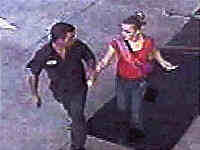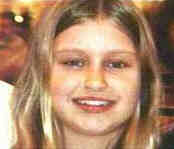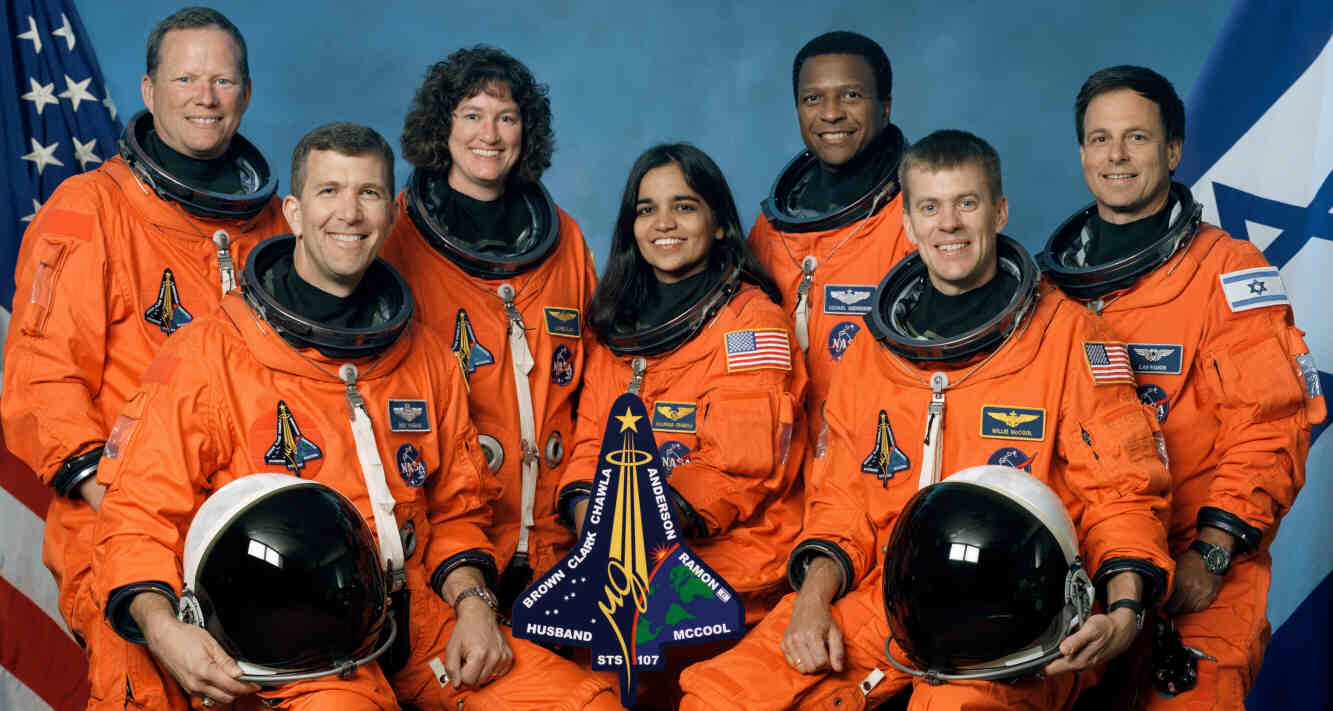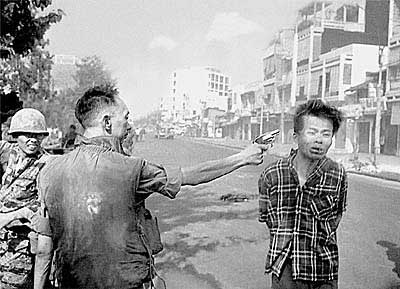Births which
occurred on a February 01:
1972 Hewlett-Packard
HP-35, first scientific hand-held calculator, is introduced ($395)
1949 First 45-RPM record is released by RCA.
1948 El transistor, aplicable a la radio, comunicaciones
y fabricación de ordenadores, es inventado por tres físicos estadounidenses.
^
1931 Boris Nikolaevich
Yeltsin, the oldest of three children, in the village
of Butka Talitskogo in the Sverdlovsk region. His parents, Klavdiya
Vasilyevna and Nikolai Ignatevich, were Russian peasants and were
part of a long line of farmers who worked the fields in this area.
Yeltsin received his education as a structural engineer at the Ural
politecnical institute in Sverdlovsk, today Yekaterinburg. Shortly
thereafter in 1955, he began a long and prosperous career in Sverdlovsk
at a company which built apartment buildings. As Yeltsin writes in
his official biography, "I did not do badly; the collective always
fulfilled the plan and the pay was not bad." But in 1968, Yeltsin
stepped sideways from his factory to enter into politics. By 1976,
he had risen to the level of first secretary of the Obkom (the regional
branch) of the Soviet Union's Communist Party (KPSS), and was also
running the factory where he began working 20 years before.
Several changes in Yeltsin's life came
in 1985. With Mikhail Gorbachev on the scene, the winds of change
had come to the KPSS and Yeltsin was asked to move to Moscow. At first
he declined, believing he would be more useful in Sverdlovsk, but
he answered the call of duty and went to the capital. On 24 December
1985, he was elected first secretary of the Moscow branch of the KPSS
where he served until 1987. His tour of duty there lasted only two
years. Yeltsin claims to have become disillusioned with perestroika,
asking to be relieved of his position and have his name taken off
the list for candidates to the Politburo of the KPSS. He was thereupon
returned to his educational origins, becoming a deputy director of
the Soviet Union's construction committee.
But Yeltsin could not stay away from politics for long. He began a
steep climb to the top after having been elected a "people's deputy"
in 1989, and later he became chairman of the Supreme Soviet of the
Russian Federation from 1990 to 1991. Famous footage can still be
seen of a young, slim, only half-gray Yeltsin throwing his KPSS membership
card on the floor before Gorbachev in July 1990 to emphasize his disgust
with the slow pace of reforms in the Soviet Union. This won him so
much popularity among the Russians that he was elected their president
less than a year later. At that time, in June 1991, Yeltsin got 57.3
percent of the vote. Barely two months later, the three-day coup that
shook the world served to further enhance Yeltsin's popularity. More
famous footage shows Yeltsin being boosted onto a tank to deliver
a speech denouncing the coup plotters, an event which led to the Soviet
Union's dissolution four months later.
Boris Yeltsin ran for re-election after five turbulent years as president.
He got less than 40 percent of the votes during the elections' first
round, and had a runoff with candidate Gennady Zyuganov. After calling
out the army in 1993 to arrest the parliament, Yeltsin's approval
rating was at an all-time low. But to the surprise of many, Yeltsin
was still in the lead over Communist Party leader Gennady Zyuganov
in opinion polls, and he won the runoff.
Yeltsin is married to Naina, also an engineer by profession from the
Sverdlovsk region, and they have two daughters, Yelena and Tatyana.
They also have four grandchildren: Katya, Masha, Boris and Gleb. http://www.russiatoday.com/bio/yeltsin.php3
BORIS NIKOLAYEVICH YELTSIN
Russian politician who became president of Russia in 1990. In 1991
he became the first popularly elected leader in the country's history,
guiding Russia through a stormy decade of political and economic retrenching
until his resignation on the eve of the year 2000.�
Yeltsin
attended the Urals Polytechnic Institute and worked at various construction
projects in the Sverdlovsk oblast from 1955 to 1968, joining the
Communist Party in 1961. In 1968 he began full-time work in the
party and in 1976 became first secretary of the Sverdlovsk oblast
party committee. Thereafter he came to know Mikhail Gorbachev, then
his counterpart in the city of Stavropol. After Gorbachev came to
power, he chose Yeltsin in 1985 to clean out the corruption in the
Moscow party organization and elevated him to the Politburo (as
a nonvoting member) in 1986. As the mayor of Moscow (i.e., first
secretary of Moscow's Communist Party committee), Yeltsin proved
an able and determined reformer, but he estranged Gorbachev when
he began criticizing the slow pace of reform at party meetings,
challenging party conservatives, and even criticizing Gorbachev
himself. Yeltsin was forced to resign in disgrace from the Moscow
party leadership in 1987 and from the Politburo in 1988.
Yeltsin
was demoted to a deputy minister for construction but then staged
the most remarkable comeback in Soviet history. His popularity with
Soviet voters as an advocate of democracy and economic reform had
survived his fall, and he took advantage of Gorbachev's introduction
of competitive elections to the USS.R. Congress of People's Deputies
(i.e., the new Soviet parliament) to win a seat in that body in
March 1989 with a landslide vote from a Moscow constituency. A year
later, on May 29, 1990, the parliament of the Russian S.F.S.R. elected
him president of the Russian republic against Gorbachev's wishes.
In his new role, Yeltsin publicly supported the right of Soviet
republics to greater autonomy within the Soviet Union, took steps
to give the Russian republic more autonomy, and declared himself
in favor of a market-oriented economy and a multiparty political
system.
In
July 1990 Yeltsin quit the Communist Party. His victory in the first
direct, popular elections for the presidency of the Russian republic
(June 1991) was seen as a mandate for economic reform. During the
brief coup against Gorbachev by hard-line communists in August 1991,
Yeltsin defied the coup leaders and rallied resistance in Moscow
while calling for the return of Gorbachev. When the coup crumbled
a few days after it had begun, Yeltsin emerged as the country's
most powerful political figure. In December 1991 he and the presidents
of Ukraine and Belarus (Belorussia) established a new Commonwealth
of Independent States that would replace the foundering USS.R. When
the Soviet Union collapsed after Gorbachev's resignation as Soviet
president on 25 December, the Russian government under Yeltsin's
leadership then assumed many of the former superpower's responsibilities
for defense, foreign affairs, and finance.
As
president of an independent Russia, Yeltsin set about the formidable
task of transforming his country's decaying command economy into
one based on free markets and private enterprise. Early in 1992
he ended government price subsidies and controls over food and other
consumer goods, while also allowing the unhindered growth of free
markets in the cities. At the same time, Russia's parliament, the
Congress of People's Deputies, had grown increasingly hostile toward
his free-market reforms. Yeltsin and the Congress were also deeply
divided over the question of the balance of powers in Russia's proposed
new constitution, which was needed to replace the obsolete 1978
Soviet-era Russian Constitution. On 21 September 1993, Yeltsin unconstitutionally
dissolved the Congress and called for new parliamentary elections.
In response, hard-line legislators attempted a coup in early October
but were suppressed by army troops loyal to Yeltsin. Parliamentary
elections and a referendum on a draft constitution were held in
December. Yeltsin's draft constitution, which increased the powers
of the presidency, was narrowly approved, but the antireform character
of Russia's newly elected parliament, the Federal Assembly, compelled
Yeltsin to govern primarily by executive decree in the coming years.
In
December 1994 Yeltsin sent Russian army troops into Chechnya, which
had unilaterally seceded from Russia in 1991. The army proved unable
to completely suppress the rebels, however, and the war further
eroded Yeltsin's declining popularity. The war in Chechnya and the
failure of his free-market reforms to spur economic growth dimmed
Yeltsin's prospects for reelection to the Russian presidency. In
another spectacular comeback, however, he won reelection over a
communist challenger in the second round of elections held in July
1996. He spent the months after his electoral victory recovering
from a heart attack he had suffered that June during the rigours
of the campaign. The state of Yeltsin's health was a recurring issue.
Early
in his second term, Yeltsin signed a cease-fire agreement with Chechnya
and in 1997 negotiated a peace treaty; tensions, however, continued.
In August 1999 Islamic rebels from Chechnya invaded Dagestan, and
the following month a series of bombings in Russia were blamed on
Chechens. Soon after, Yeltsin ordered the return of troops to the
republic. In the late 1990s political maneuvering dominated much
of the country's government as Yeltsin dismissed four premiers and
in 1998 fired his entire cabinet, though many were later reappointed.
The following year the State Duma initiated an impeachment drive
against Yeltsin, charging that he had encouraged the breakup of
the Soviet Union in 1991, among other allegations. The Duma, however,
was unable to secure the necessary votes to proceed. Ever unpredictable,
Yeltsin announced his resignation on 31 December 1999, in favor
of what he characterized as a new, energetic leadership. He named
Prime Minister Vladimir V. Putin acting president, and in turn Putin
granted Yeltsin immunity from future prosecution. |
1920 The Royal Canadian Mounted Police is created.
1917 José Luis Sampedro, economista y escritor español.
1913 Grand Central Station opens in New York City,
NY. It is at the time the largest train station in the world.
1905
Emilio Segrè, Italian-born US physicist who died on 22 April 1989.
1904 S.J. (Sidney) Perelman (humorist/writer: Monkey Business,
Horse Feathers, One Touch of Venus, Strictly from Hunger, Westward Ha!,
Around the World in 80 Clichés) He died on 17 October 1979.
1902 James
Mercer Langston Hughes, Black US poet and writer, prominent
in the Harlem Renaissance, who became one of the foremost interpreters of
racial relationships in the United States. Influenced by the Bible, W. E.
B. Du Bois, and Walt
Whitman, Hughes depicted realistically the ordinary lives of black people.
He died on 22 May 1967.
1900 Stephen Potter, humorist/writer
(School for Scoundrels, Shipbuilders)
1900 Burkill,
mathematician
1887 Charles
Bernard Nordhoff, US novelist and writer of adventure and travel
books. Charles Nordhoff wrote with his friend James
Norman Hall a three-volume novel about the famous eighteenth-century
mutiny, in which the crew of the H.M.S. Bounty, a British war vessel,
arose against their cruel commander, Captain William Bligh. The work had
a huge success. Author of California:
For Health, Pleasure, and Residence — California:
For Health, Pleasure, and Residence — Northern
California, Oregon, and the Sandwich Islands
1885
Camille Chautemps, premier, France.
1884 Oxford
English Dictionary, first edition, first volume (A-Ant), is
published.
1881 La
Vanguardia: publicación del primer número de este diario
barcelonés, uno de los de mayor circulación en España.
1874
Hugo von
Hofmannsthal “Loris”, Austrian poet, dramatist, and
essayist, who became internationally famous for his collaboration with the
German composer Richard Strauss. After World War I Hofmannsthal founded
with Max Reinhardt the Salzburg Festival, which have given regularly performances
of Hofmannsthal's plays. He died in 1929.
1861 (01 Jan?) Jacques-Émile
Blanche, French painter who died on 20 September 1942. —
more with links to
images.
1849 Albert-Marie-Charles Lebourg,
French painter who died on 07 January 1928. — MORE
ON LEBOURG AT ART “4” FEBRUARY
with links to images.
1845 José Echena,
Spanish artist who died in 1909.
1838 Joseph Keppler,
Austrian born US caricaturist and magazine founder who died on 19 February
1894.
1827 Alphonse de Rothschild French banker
^
1814 The Corsair by Lord Byron
is published
Lord Byron's The Corsair is
published and sells some 10'000 copies on its first day in print.
The poem was one of several gloomy works he produced at a time when
he was engaged in several ill-fated love affairs.
George Gordon Noel Byron was born in
Aberdeen, Scotland, on 22 January 1788 and was raised in poverty.
Burdened with a clubfoot, Byron later forbid anyone to mention his
condition. At age 10, he inherited his great uncle's title and became
Lord Byron. He attended Harrow, then Trinity College, Cambridge, where
he ran up enormous debts. His first published volume of poetry, Hours
of Idleness (1807), was savaged by critics, especially in Scotland,
and his second published work, English Bards and Scotch Reviewers
(1809), attacked the British literary establishment.
After receiving his master's degree
in 1809, he traveled in Portugal, Spain, and the Near East for two
years and returned to England on 14 July 1811. His wanderings inspired
his poetic work Childe
Harold's Pilgrimage (1812), which won him almost instant
acclaim in England. As he said at the time, "I awoke one morning and
found myself famous." His poetry, manners, fashion, and tastes were
widely imitated.
On 02 January 1815, Byron married Anne
Isabella Milbanke [17 May 1792 – 16 May 1860], and the couple
had a daughter, Augusta
Ada Byron [10 Dec 1815 – 27 Nov 1852]. Ada, who would become
countess of Lovelace, proved to be a mathematical prodigy and is considered
by some to be the first computer programmer, thanks to her work on
the computing machine of Charles
Babbage [26 Dec 1791 – 18 Oct 1871]. The marriage quickly
foundered, and the couple legally separated on 16 January 1816. By
this time, scandal had broken out over Byron's suspected incest with
his half-sister, Augusta Leigh. He was ostracized from society and
forced to flee England on 25 April 1816. He settled in Geneva, near
Percy
Bysshe Shelley [04 Aug 1792 – 08 Jul 1822] and his wife,
Mary Wollstonecraft Shelley [30 Aug 1797 – 01
Feb 1851]. There, he became intimately involved with Mary's half-sister,
Claire
Clairmont [27 Apr 1798 – 19 Mar 1879], who bore his daughter
Clara
Allegra Byron [12 Jan 1817 – 19 Apr 1822].
Byron moved to Venice that same year
and began a period of debauchery. In 1819, he entered an affair with
the Countess Teresa Guiccioli, the young wife of an elderly count,
and the two remained attached for many years. Byron, always an avid
proponent of liberal causes and national independence, supported the
Greek war for independence. He joined the cause in Greece, training
troops in the town of Missolonghi, where he died of malaria on 19
April 1824.
OTHER WORKS BY BYRON ONLINE:
Don
Juan, Hebrew
Melodies, Manfred, Selected
Poetry, Selection
of short poems, |
1805 Auguste Blanqui France, revolutionary (workers' leader)
1791 Charles J Sax Belgian music instrument builder
1801 Thomas Cole, English US Hudson
River School painter, specialized in Landscapes,
who died on 11 February 1848. — MORE
ON COLE AT ART “4” FEBRUARY
with links to images. |


 [contrails
of pieces of the shuttle as it breaks up >]
[contrails
of pieces of the shuttle as it breaks up >]
 1986
Alva Myrdal, Swedish diplomat, Nobel peace prize winner (1982),
born on 31 January 1902.
1986
Alva Myrdal, Swedish diplomat, Nobel peace prize winner (1982),
born on 31 January 1902.